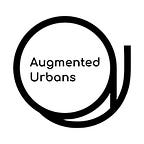Gävle: Making places for biodiversity awareness
This year, scientists and other opinion leaders have repeatedly reminded us about the pressure that rapidly expanding built environment puts on vulnerable ecosystems. The European Union has declared a “climate and environmental emergency”. Business as usual does not suffice anymore — in the search for new ways forward, ecosystem services and digital technology show promise as two aspects to combine.
Tackling this issue, Augmented Urbans Local Action in Gävle designs attractive and ecosystem-service-inspired outdoor spaces in residential yards. The ongoing co-creation process between the University of Gävle and Gavlegårdarna (the municipality owned housing company) has already resulted in a number of activities and pilots from which much needed new solutions will arise. Targeted interventions create a better environment for tenants and increase their awareness of biodiversity and pollinating insects, such as bees, bumblebees, and butterflies, which all deliver essential ecosystem services for society.
Ecosystem interventions have both been planned and implemented in three case sites in Gävle. From a survey conducted with tenants, we found that many had an interest in taking care of a mini-garden during the summer season. The interest was much larger than initially expected and Gavlegårdarna delivered more than 100 mini-garden flower pots to the tenants of the neighbourhood Hemsta. When visiting the neighbourhood in the late summer, several people told us about how much they had enjoyed their mini-gardens flowering; the scents, tastes and colours of summer.
A second pollinator inventory was also conducted similarly to previous summer 2018. This year, the weather appeared to have favoured the pollinators, as an increased number of them were found. The bee-hotels on the site were included on the Swedish Society for Nature Conservation’s register.
After the summer, more than 4000m2 of lawns were transformed into meadows. After removing the grass, a layer of new nutrient-poor soil was added and either seeds or pre-cultivated carpets of meadows were planted. On some of the areas, hay and seeds from the preserved cultural landscapes in the region were spread out. For this, the Swedish Society for Nature Conservation provided the hay with seeds taken from one of the biodiversity-rich meadows. The Upplandsstiftelsen and the County Administrative Board of Gävleborg also contributed with hay from other preserved cultural landscapes. We hope that the new meadows will bloom next year and create small oases for both the tenants and the pollinators.
Parallel to workshops, meadow-creation, pollinator inventory and surveys, VR technology has also been tested to create ideas, how it could benefit the integrated planning of the case areas. The developed ideas have then been evaluated based on how useful they could be in improving existing systems, structures and processes both for tenants and pollinators.
One of the largest barriers to enhancing biodiversity and ecosystems in the neighbourhoods seems to be the lack of knowledge and skills in the management. AR technology could be helpful in delivering this crucial information, like the location of plants, their purpose, function and how they need to be maintained. Therefore, we now explore the possibilities to develop digital tools that can facilitate this.
During the Local Action implementation, resilience-thinking has gained more support by an increased awareness of the loss of species and the importance of pollinators. The need for more participatory planning processes is growing as well. These developments make us remember the importance of these issues. We would like to thank all the people who have helped us in the project work so far and hope our efforts, project ideas and planted meadow seeds will grow successfully in the future.
—
text and photos: Marita Wallhagen, University of Gävle
